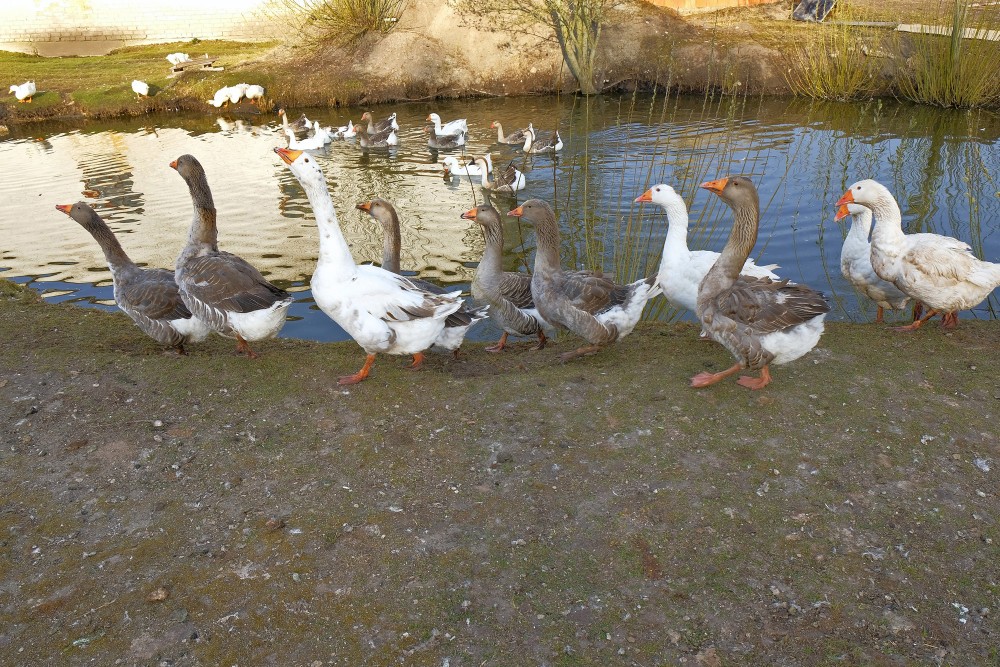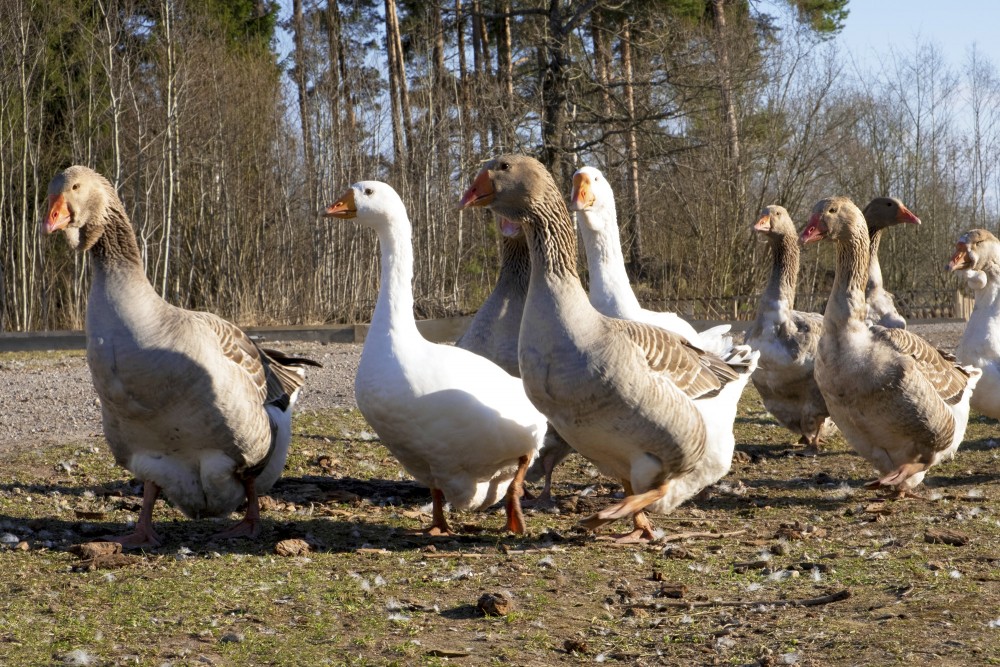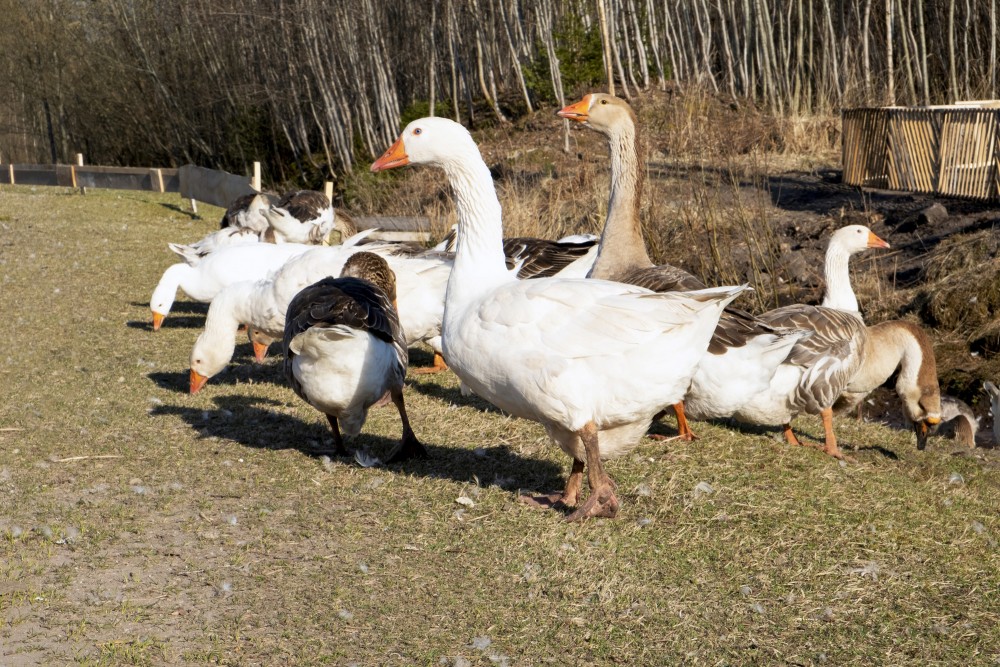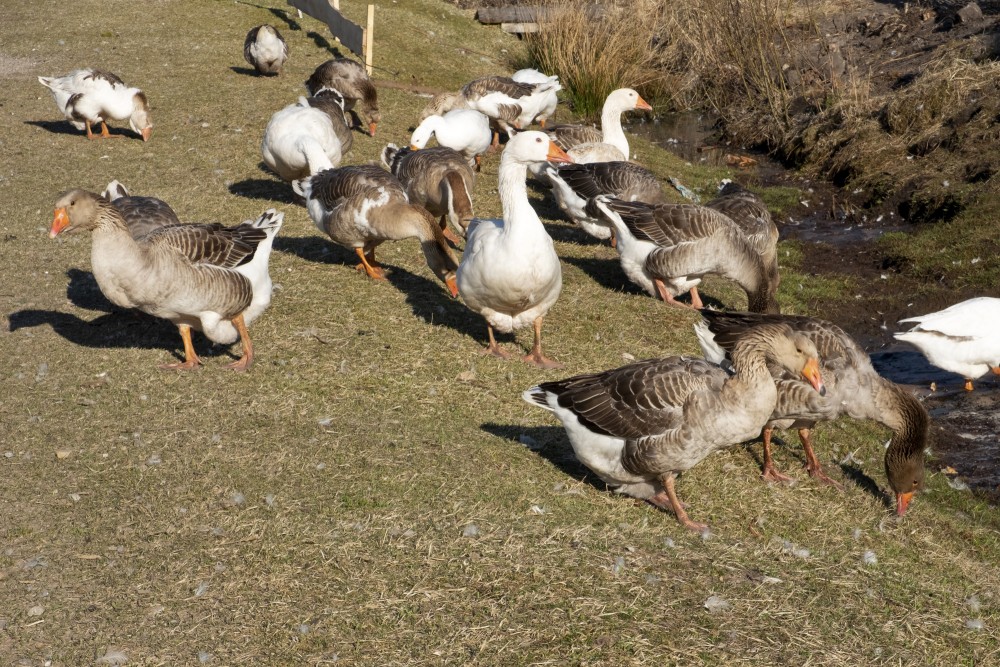Goose
Geese are waterfowl of the family Anatidae. This group comprises the genera Anser (the grey geese) and Branta (the black geese). Chen, a genus comprising 'white geese', is sometimes used to refer to a group of species that are more commonly placed within Anser. Some other birds, mostly related to the shelducks, have "goose" as part of their names. More distantly related members of the family Anatidae are swans, most of which are larger than true geese, and ducks, which are smaller.
Etymology
The word "goose" is a direct descendent of Proto-Indo-European root, ghans-. In Germanic languages, the root gave Old English gōs with the plural gēs and gandres (becoming Modern English goose, geese, gander, and gosling, respectively), Frisian goes, gies and guoske, New High German Gans, Gänse, and Ganter, and Old Norse gās. This term also gave Lithuanian: žąsìs, Irish: gé (goose, from Old Irish géiss), Latin: anser, Ancient Greek: χήν (khēn), Dutch: gans, Albanian: gatë (heron), Sanskrit hamsa and hamsi, Finnish: hanhi, Avestan zāō, Polish: gęś, Romanian: gâscă / gânsac, Ukrainian: гуска / гусак (guska / gusak), Russian: гусыня / гусь (gusyna / gus), Czech: husa, and Persian: غاز (ghāz).
The term goose applies to the female in particular, while gander applies to the male in particular. Young birds before fledging are called goslings.The collective noun for a group of geese on the ground is a gaggle; when in flight, they are called a skein, a team, or a wedge; when flying close together, they are called a plump.
True geese and their relatives
The three living genera of true geese are: Anser, grey geese, including the greylag goose, and domestic geese; Chen, white geese (often included in Anser); and Branta, black geese, such as the Canada goose.
Two genera of geese are only tentatively placed in the Anserinae; they may belong to the shelducksor form a subfamily on their own: Cereopsis, the Cape Barren goose, and Cnemiornis, the prehistoric New Zealand goose. Either these or, more probably, the goose-like Coscoroba swan is the closest living relative of the true geese.
Fossils of true geese are hard to assign to genus; all that can be said is that their fossil record, particularly in North America, is dense and comprehensively documents many different species of true geese that have been around since about 10 million years ago in the Miocene. The aptly named Anser atavus (meaning "progenitor goose") from some 12 million years ago had even more plesiomorphies in common with swans. In addition, some goose-like birds are known from subfossil remains found on the Hawaiian Islands.
Geese are monogamous, living in permanent pairs throughout the year; however, unlike most other permanently monogamous animals, they are territorial only during the short nesting season. Paired geese are more dominant and feed more, two factors that result in more young.
Other birds called "geese"
Some mainly Southern Hemisphere birds are called "geese", most of which belong to the shelduck subfamily Tadorninae. These are:
- Orinoco goose, Neochen jubata
- Egyptian goose, Alopochen aegyptiaca
- The South American sheldgeese, genus Chloephaga
- The prehistoric Malagasy sheldgoose, Centrornis majori
Others:
- The spur-winged goose, Plectropterus gambensis, is most closely related to the shelducks, but distinct enough to warrant its own subfamily, the Plectropterinae.
- The blue-winged goose, Cyanochen cyanopterus, and the Cape Barren goose, Cereopsis novaehollandiae, have disputed affinities. They belong to separate ancient lineages that may ally either to the Tadorninae, Anserinae, or closer to the dabbling ducks (Anatinae).
- The three species of small waterfowl in the genus Nettapus are named "pygmy geese". They seem to represent another ancient lineage, with possible affinities to the Cape Barren goose or the spur-winged goose.
- A genus of prehistorically extinct seaducks, Chendytes, is sometimes called "diving-geese" due to their large size.
- The unusual magpie goose is in a family of its own, the Anseranatidae.
- The northern gannet, a seabird, is also known as the "Solan goose", although it is a bird unrelated to the true geese, or any other Anseriformes for that matter.
https://en.wikipedia.org/wiki/Goose
Continue reading





































